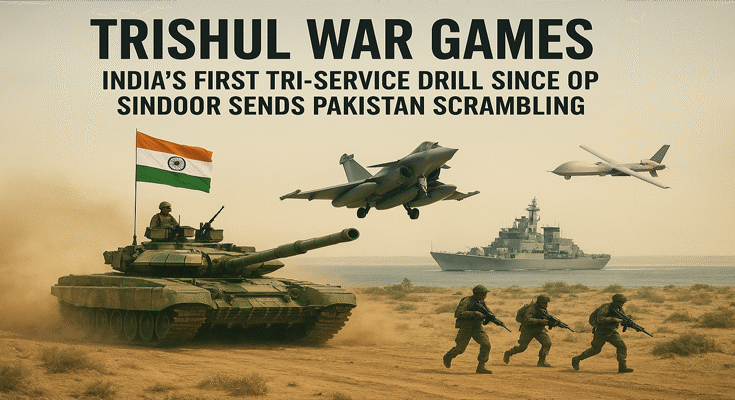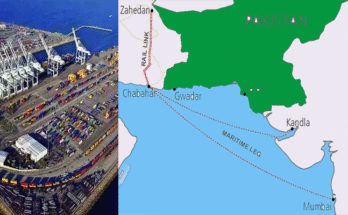New Delhi: In a bold display of strength and coordination, India has kicked off Exercise Trishul—its first major tri-service military drill since the success of Operation Sindoor earlier this year—sending clear signals of readiness while triggering nervous reactions in Pakistan.
The massive war games, which began on October 30 and will run till November 10, bring together the Army, Navy, and Air Force for large-scale joint operations in the western sector. Senior defence officials said the exercise is designed to test combat readiness, validate key lessons from Operation Sindoor, and enhance interoperability across land, air, and sea.
India’s biggest post-Sindoor military wargame Exercise Trishul begins today along the India-Pak border in Gujarat-Rajasthan.
Tests Op Sindoor learnings, defence of Kutch & simulates a lightning quick offensive into south Pakistan.
I report details: pic.twitter.com/8iJHdg3sMJ
— Shiv Aroor (@ShivAroor) October 30, 2025
Strategic Synergy on Display
The Trishul War Games span multiple terrains—ranging from the Thar desert to coastal regions along Saurashtra. The drills include amphibious landings, combined air-ground assaults, and integrated multi-domain operations meant to refine India’s warfighting strategies and coordination among the three services.
Top military planners said Trishul aims to assess how efficiently the forces can operate together under intense, real-world conflict scenarios while deploying India’s most modern systems and platforms.
Pakistan Reacts Nervously, Shuts Down Airspace
The large-scale exercise appears to have rattled Islamabad. Within hours of India issuing its NOTAM (Notice to Airmen), Pakistan’s aviation authorities imposed widespread airspace restrictions across central and southern sectors for 48 hours—effectively covering most of the country.
Defence sources say the move reflects Pakistan’s unease over the scope and intent of the drills, which follow closely on the heels of Operation Sindoor that demonstrated India’s rapid-strike capability earlier this year.
India’s Full Arsenal in Action
The Indian Army has deployed over 20,000 soldiers along with T-90 battle tanks, BrahMos missiles, Akash air defence systems, and Prachand attack helicopters. The Indian Air Force has committed Rafale and Su-30MKI fighters, supported by Sea Guardian and Heron drones.
The Navy’s participation includes Kolkata-class destroyers, Nilgiri-class frigates, and fast-attack vessels. Elite commando units—Army Para SF, Navy MARCOS, and IAF Garuds—are also engaged in joint ground and maritime missions.
Sir Creek: The New Flashpoint
The exercise’s focus on the Sir Creek region—an unresolved 96-km estuary dividing Gujarat’s Rann of Kutch and Pakistan’s Sindh province—has added to tensions.
Defence Minister Rajnath Singh has flagged Pakistan’s recent military expansion near the area, including radar posts, bunkers, and new forward bases capable of launching drone operations.
Adding to the friction, Pakistan Navy Chief Admiral Naveed Ashraf’s surprise inspection of forward posts in Sir Creek last week, and his vow to defend “every inch of our maritime borders,” has put Indian forces on heightened alert.
Defence analysts view Exercise Trishul as more than just a drill—it’s a clear strategic message that India’s forces are combat-ready, integrated, and prepared to respond decisively if provoked.




